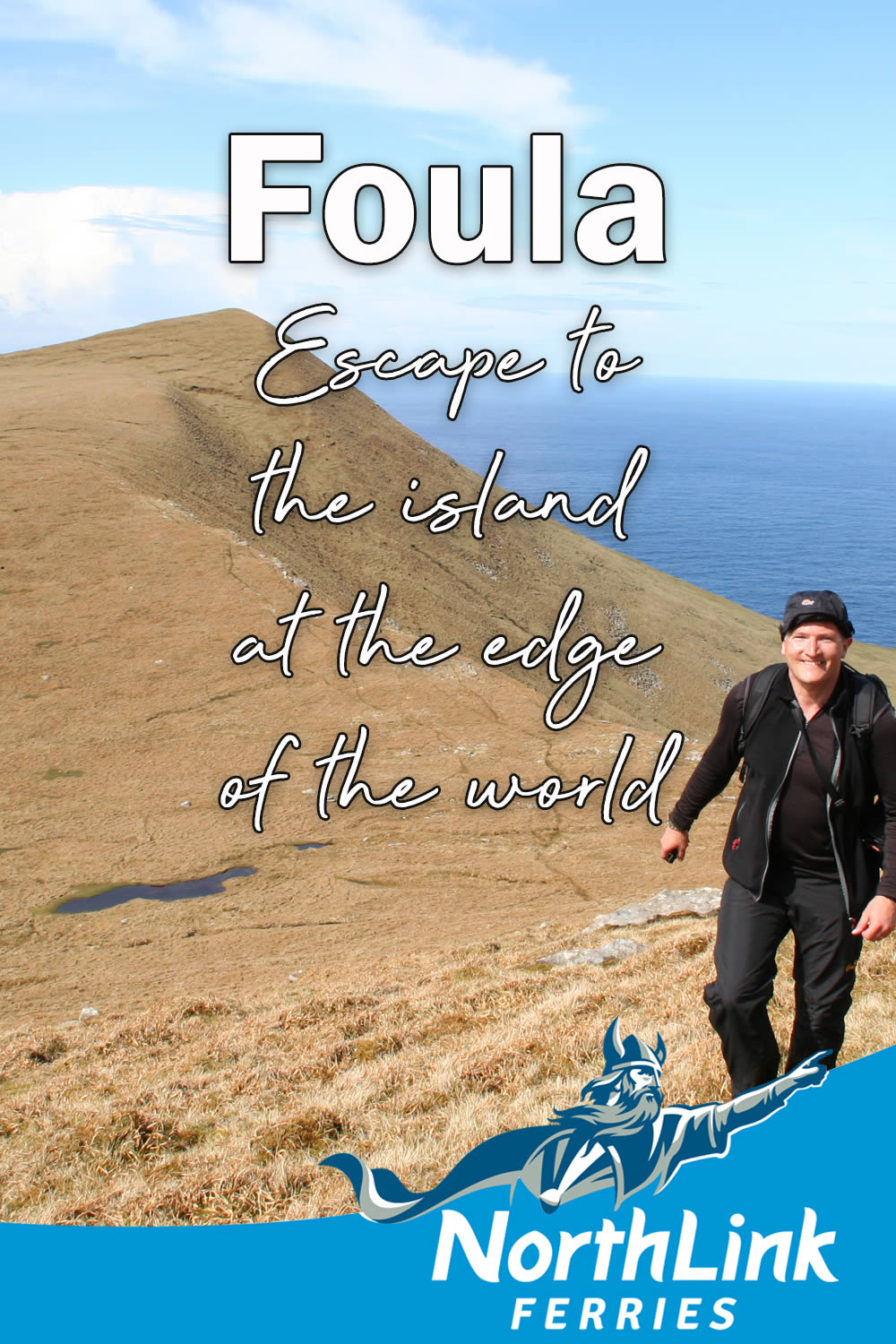Foula – Escape to the island at the edge of the world
But with Foula it is hard to argue that the island is wonderfully remote and gloriously wild. It lies across 20 miles of open ocean from the Shetland Mainland and feels like it’s a world away.
Have you ever yearned to journey to the edge of the world? Well then how about sailing, or hopping on a short plane ride, to the island at the edge of the world? That isle is Foula, the most remote inhabited island in the British Isles and one of the most beguiling and fascinating places I’ve ever been as a travel writer who has had the privilege to visit over 100 countries.
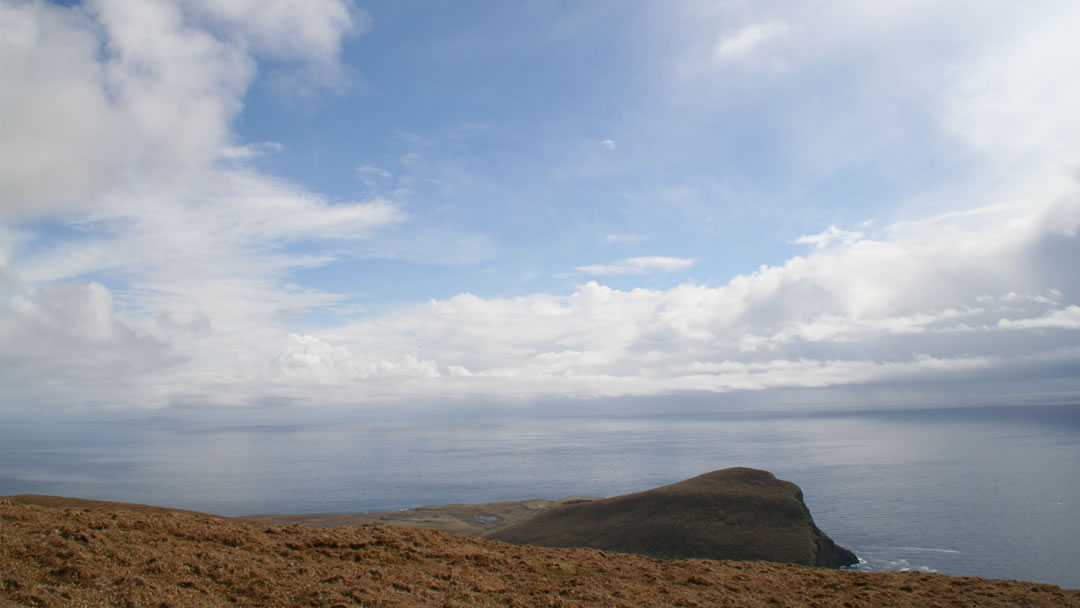
Long was I determined to make it out to a pear-shaped island 3.5 miles long by 2.5 miles wide that starred as a doppelganger for St Kilda in the 1937 Michael Powell film ‘Edge of the World’. On my first trip the pilot – my new buddy Marshall – and I swooped out of Tingwall Foula-bound with me in the front seat. As the isle grew larger through the cockpit window of the tiny Islander plane I was distracted by a splash in the cobalt blue Atlantic. I glimpsed the dark hulk of a minke whale, its dorsal fin briefly breaking the surface before plunging back into the inky depths: the perfect introduction to naturally cinematic Foula.
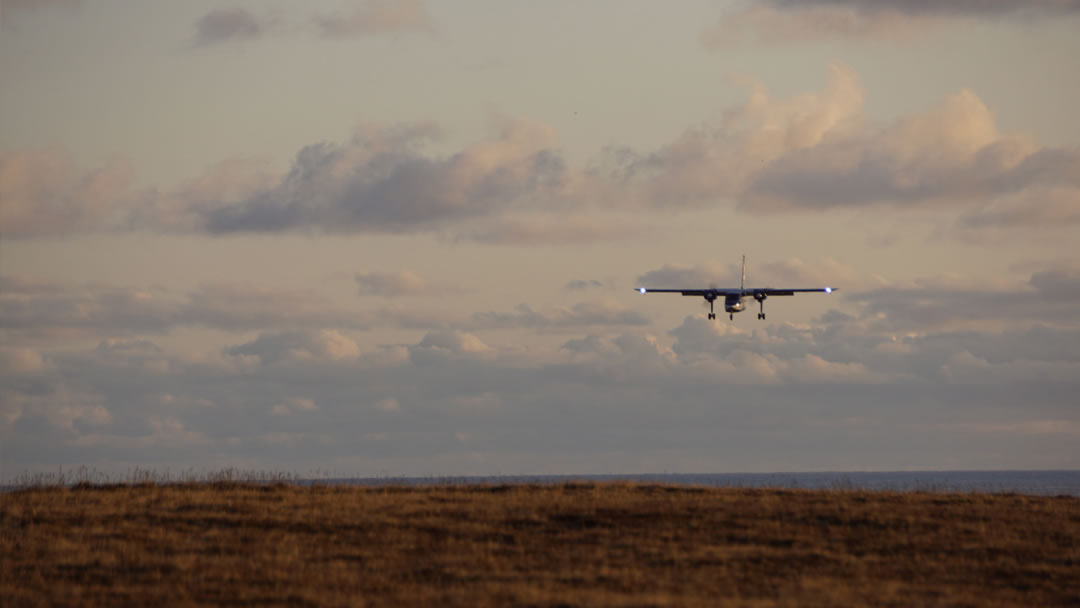
Foula has much that makes it distinct even from Shetland Mainland, nevermind the rest of the world. The island’s residents literally work on a different calendar. Not for them the Gregorian calendar like most of the rest of the Western world. They steadfastly stuck with the Julian calendar when the rest of Britain adopted the Gregorian back in 1752. The 30 or so islanders celebrate Christmas on 6th January and New Year on the 13th. Traditionally almost all of them in the same house!
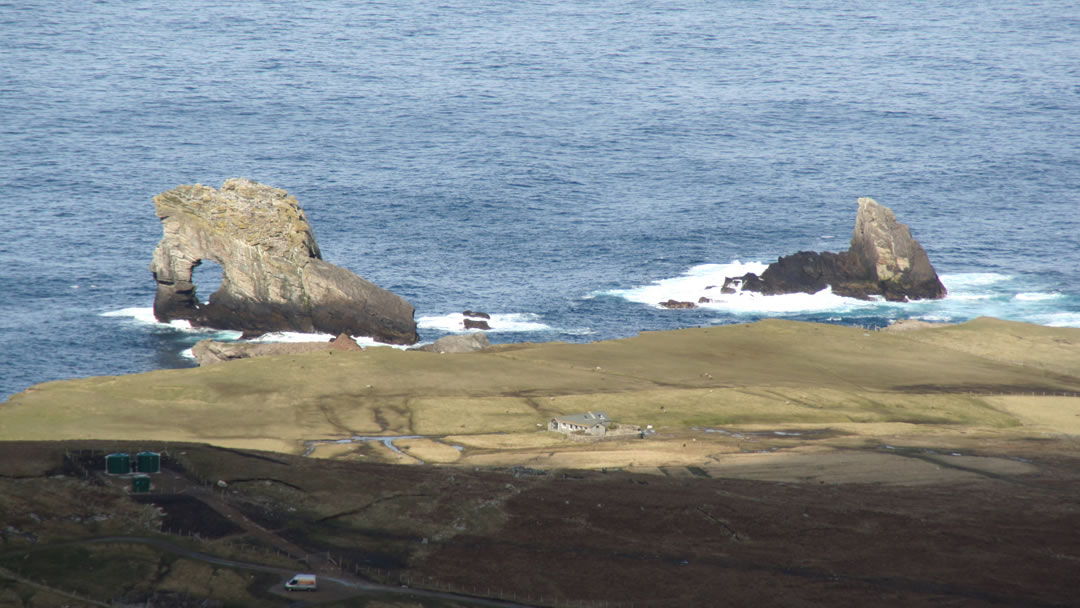
I was relieved to bash down on to a path-wide landing strip, which was built by the islanders. Relieved as the local Airtask airline schedule shows the local airport as FOU, officially the official international code for Fougamou in Gabon in Africa. My welcome party was the warm handshake of my ‘baggage handler’ Magnus and his beaming wife Fran. If this cheery, rosy-faced couple and their seriously cute son were anything to go by life on Foula is good for the soul.
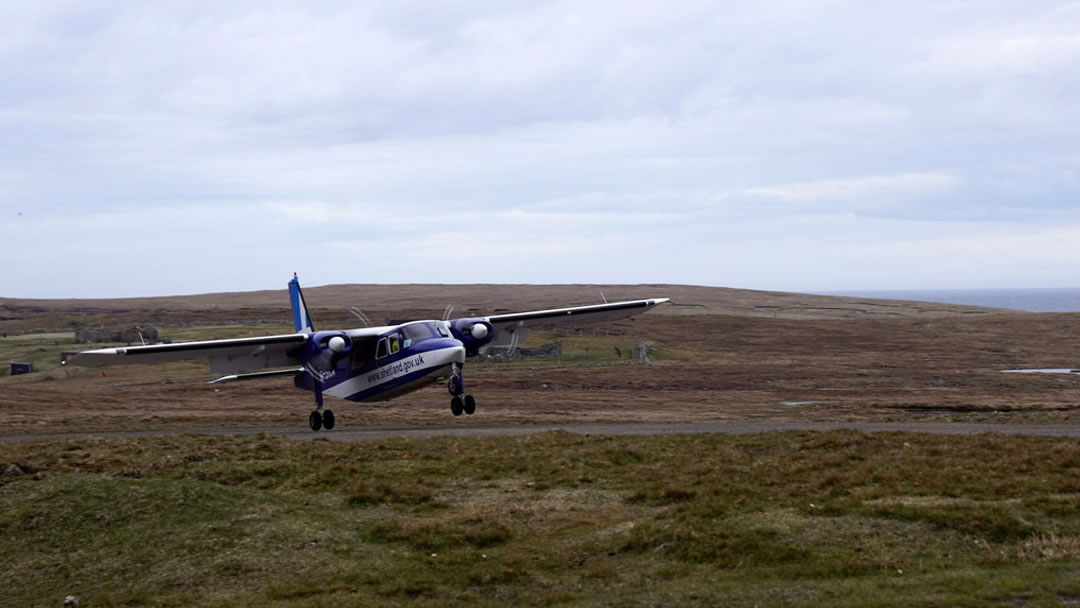
Magnus and I bounced along the island’s only road taking in the ‘sights’ of Hametown and Ham, Foula’s twin hamlets. Foula is one grandiose natural amphitheatre, with five tempting hills and the kind of dramatically rugged coastline that has documentary makers salivating.
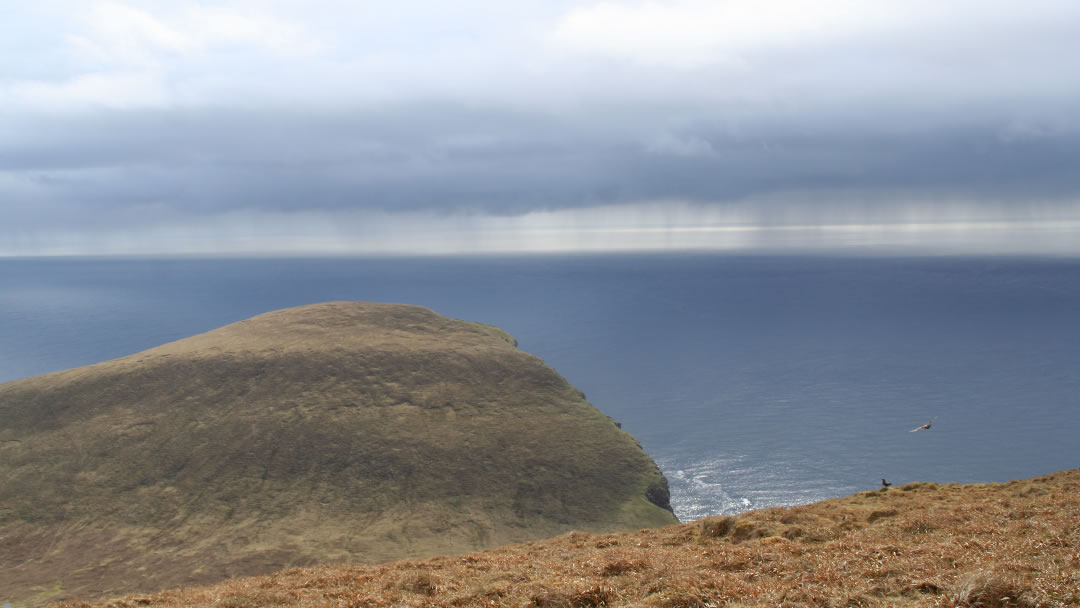
In Foula everyone wears numerous hats in a world where communal living and helping each other is not just the talk of self-books and yoga classes. Here in the Atlantic, when the weather can cut Foula off from Shetland for days, man – and woman – have to work together. Indeed Foula was cut off from the mainland for 77 days in the 1960s! If you’re from a city it’s life-affirming to observe this community spirit.
The islanders get around not being part of the National Grid through the Foula Electricity Trust, which powers Foula using a hybrid mix of wind turbines, a hydro generator and solar panels, and is currently aiming to steer a path to Net Zero.
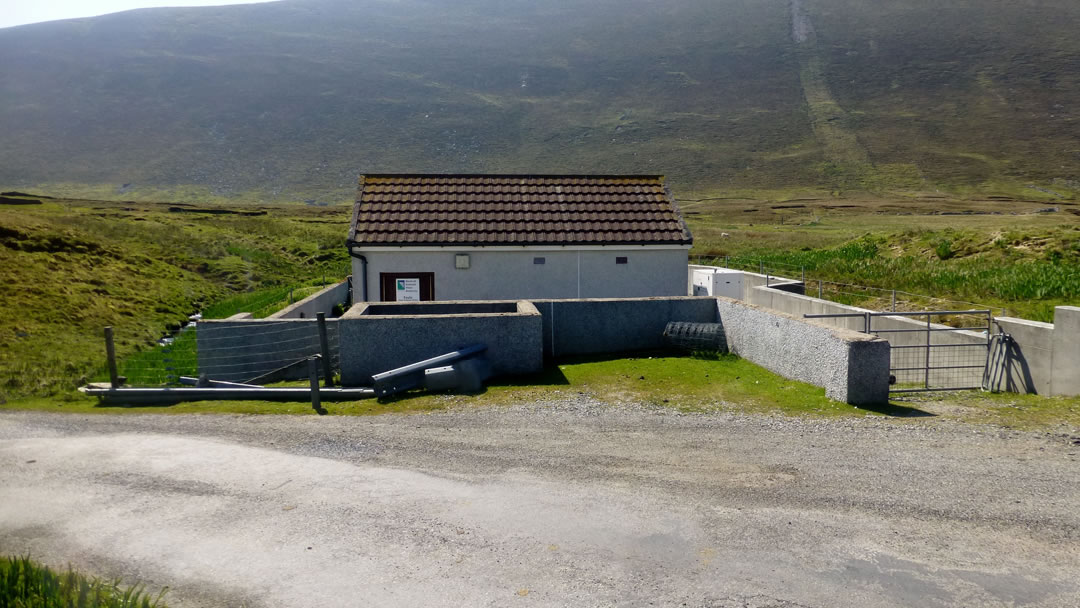
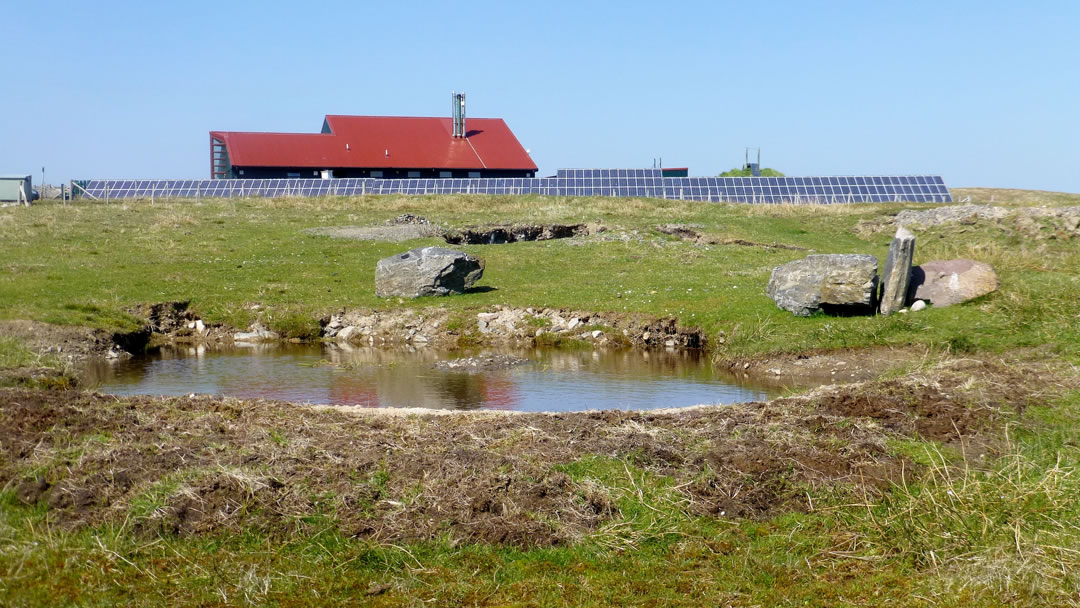
I share the frustration of people living in the thriving and connected communities of Orkney and Shetland when they are dismissed as ‘remote’ or ‘wild’ on glossy TV documentaries. But with Foula it is hard to argue that the island is wonderfully remote and gloriously wild. It lies across 20 miles of open ocean from the Shetland Mainland and feels like it’s a world away. No wonder the Romans talked of it as Ultima Thule.
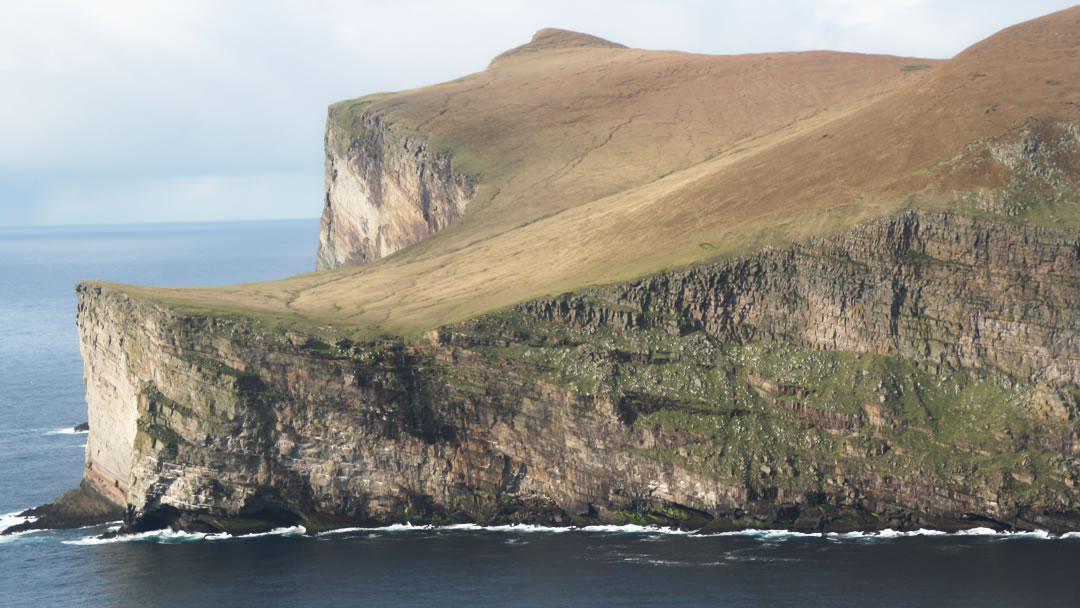
My two visits to Foula have given me a window into a world far different than any other around the British Isles. I meet schoolkids in the Outer Hebrides bemoaning their small class sizes, but wasn’t ready for Jack the first time I ventured to Foula. He was the sole pupil. He had three classrooms to choose from and a dedicated teacher. The highlight of the curriculum were the very infrequent trips to Shetland Mainland to go to a swimming pool. Jack was an enterprising, determined soul. He charged a pretty penny for postcards and wanted to charge me for using the school loo. I felt Foula’s future safe in his hands.
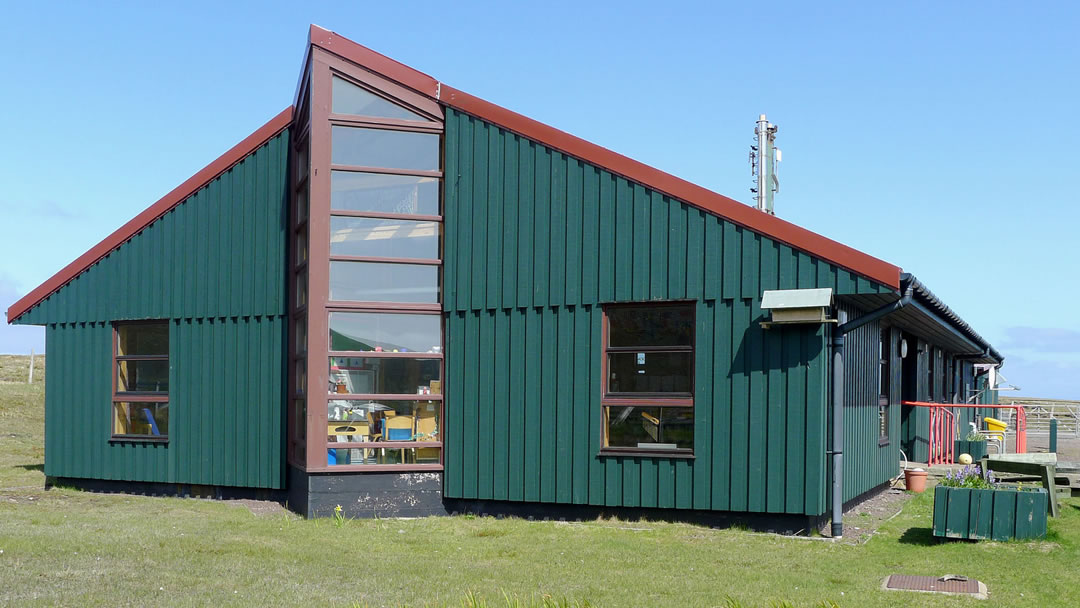
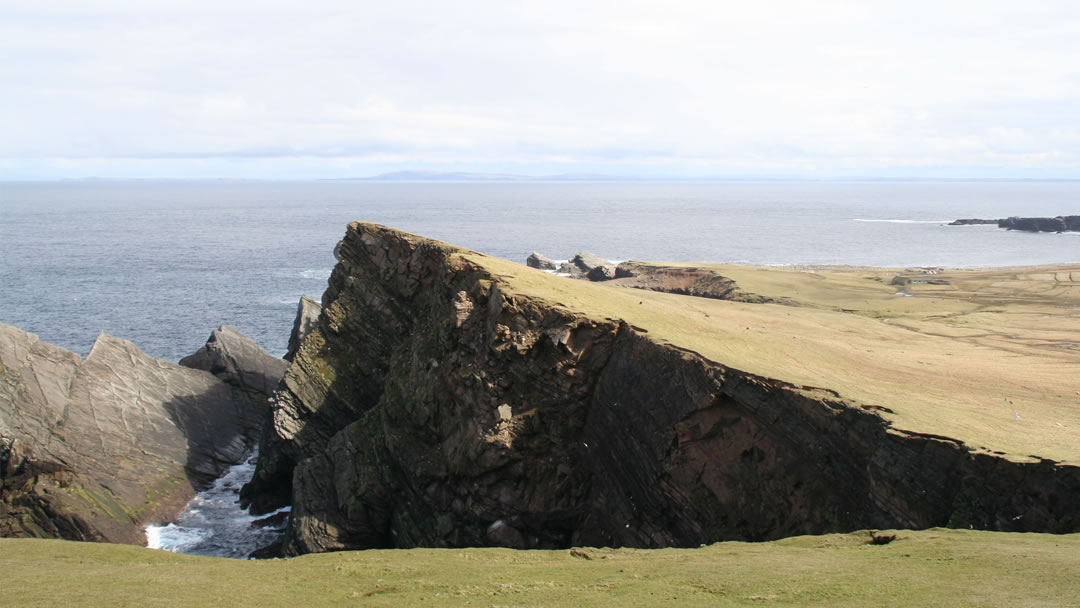
I was also in good hands with Jack’s mother, who doubled then as the local ranger and the airport firewoman. Tellingly when she talked of visiting Aberdeen the only sparkle in her eyes was when she talked of the parks and butterflies. Nature is in the islanders’ blood. We peered out over the Gaada Stack arch as I tried to impress Penny with my plane minke-spotting story. I needn’t have bothered. She gently spoke of a childhood spent watching orcas hunt for seals on the rocks below.
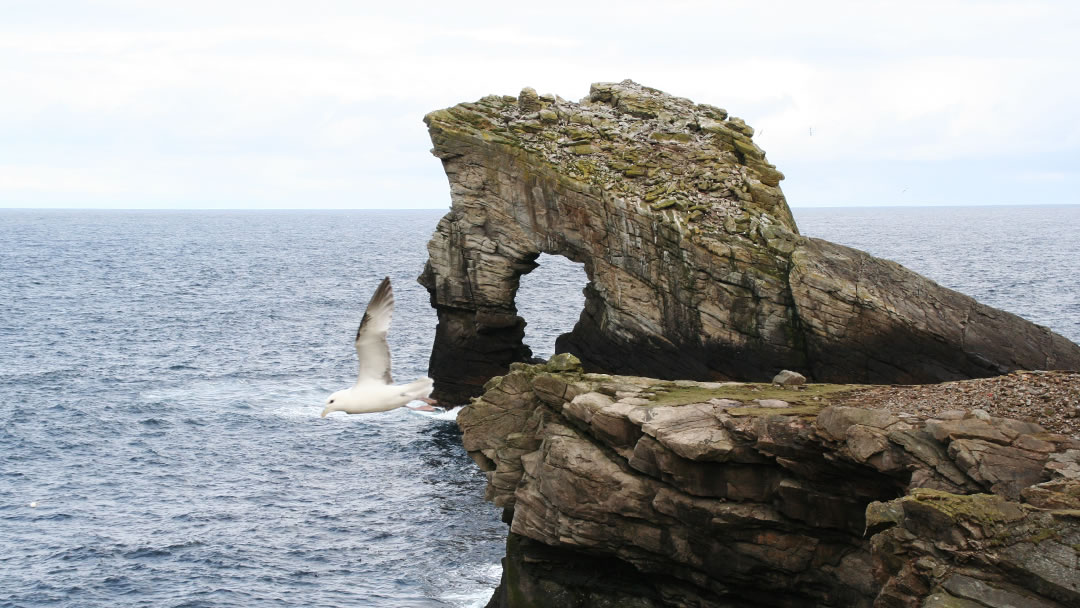
While the community is a warm one you need to come prepared. There are self-catering options, but you need to bring your own food and drink. The wildness is a key draw on an island where when you venture out of the wee hamlets you are out in Mother Nature writ large. All alone. That is unless you engage the services of the ever-helpful and accommodating Foula Ranger Service, who are administered by Foula Heritage. Their two part time rangers – Sheila Gear and Magnus Holbourn – and team of ranger assistants have a dual role of helping visitors make the most of Foula and also protecting an environment that may look savage and stoic, but is still all too vulnerable to the machinations of man.
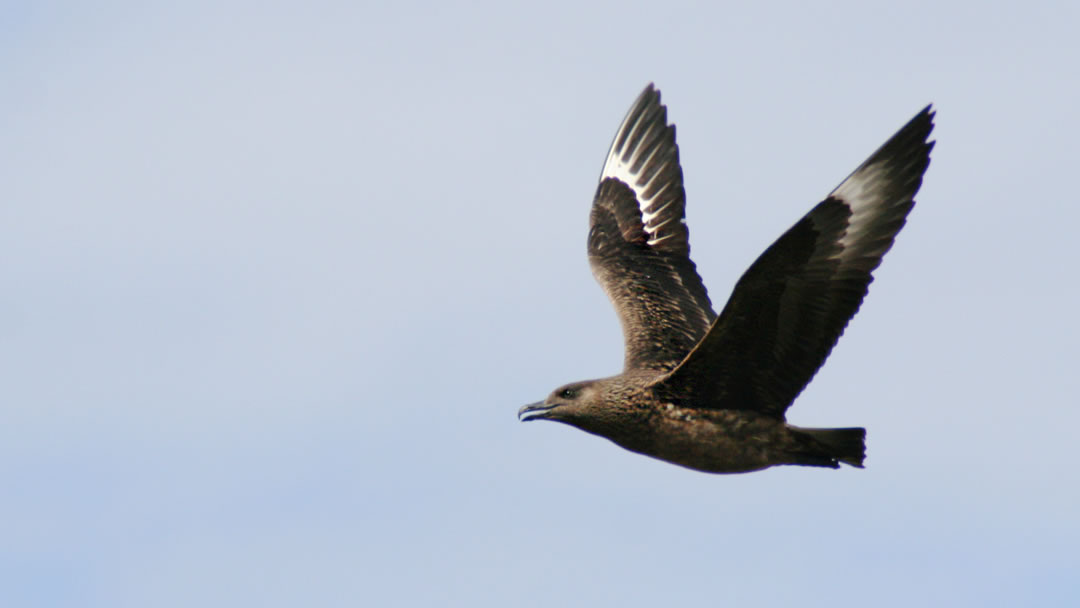
I loved being led around by a ranger with so much more knowledge than me. But one thing that all of the residents I met eulogised about Foula was the complete peace. I sought that hiking off up to the highest point of Da Sneug. On my way I yomped through rough ground alive with bonxies, the hulking great birds (officially called great skuas) who can knock you off your feet in the nesting season in summer. The island has the world’s largest bonxie population. Foula is also alive with eiders, guillemots, puffins, kittiwakes, shags, eider, and all manner of gulls. Not to mention the otherworldly stary-eyed shaggy local sheep, Foula Sheep, who produce some of Shetland’s finest wool.
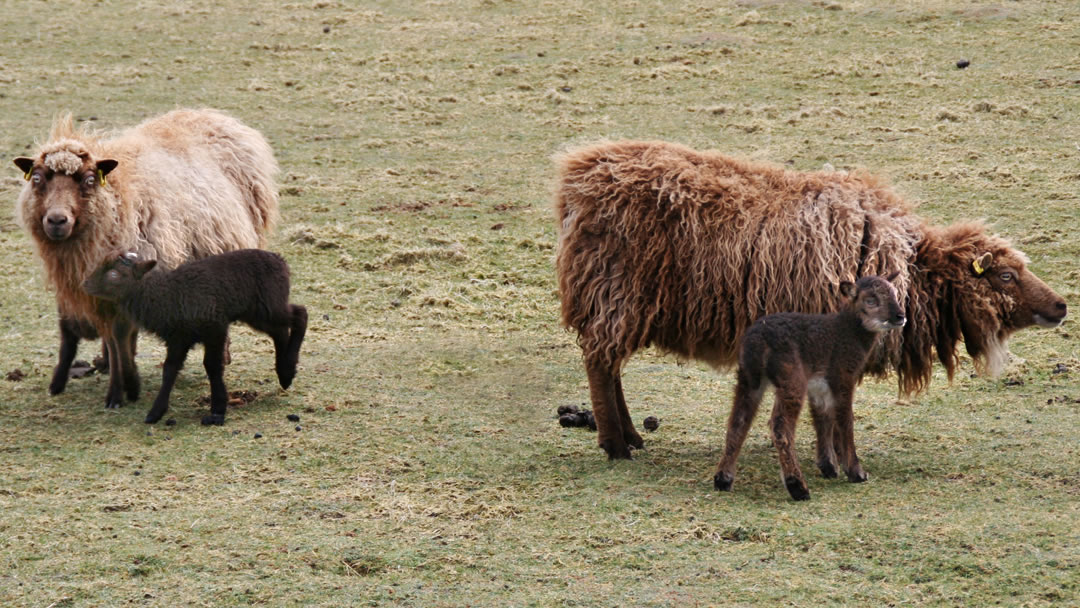
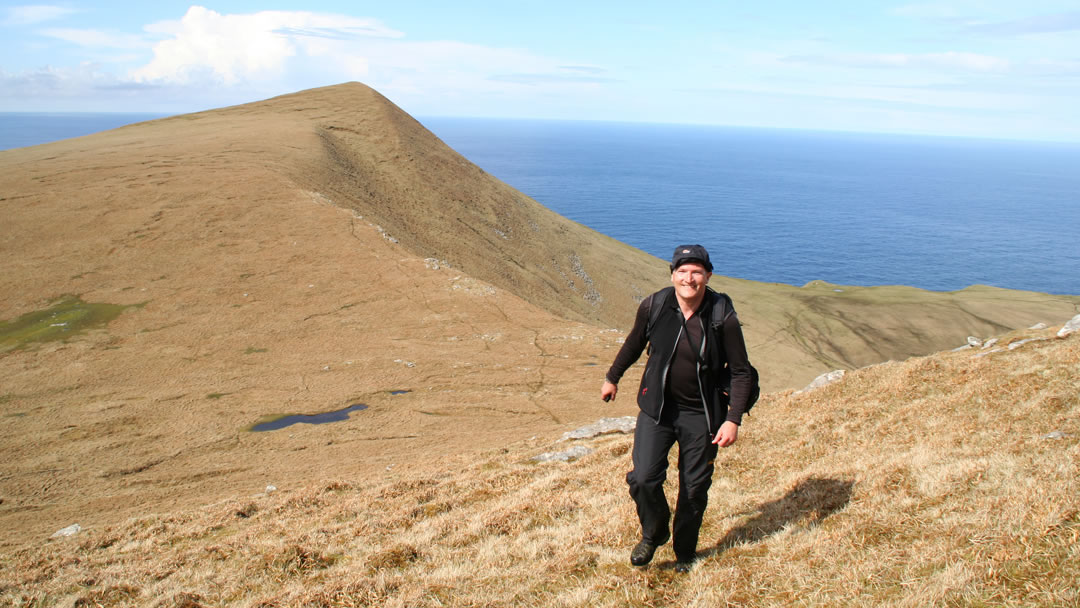
Hiking highlights are manifest. There is modern green energy powered Foula Lighthouse and 248m-high peak of Da Noup, 376m-high Da Kame and 418m-high Da Sneug. Then there is the vaulting drama of some of highest coastal cliffs in the British Isles. Da Sneck ida Smaalie is a natural feature not to be taken lightly – you need a ranger with you to tackle the treacherous 30m chasm on the west coast. On this unique island at the edge of the world you need people and it’s the people who warm your soul every bit as much as the epic drama of Mother Nature.
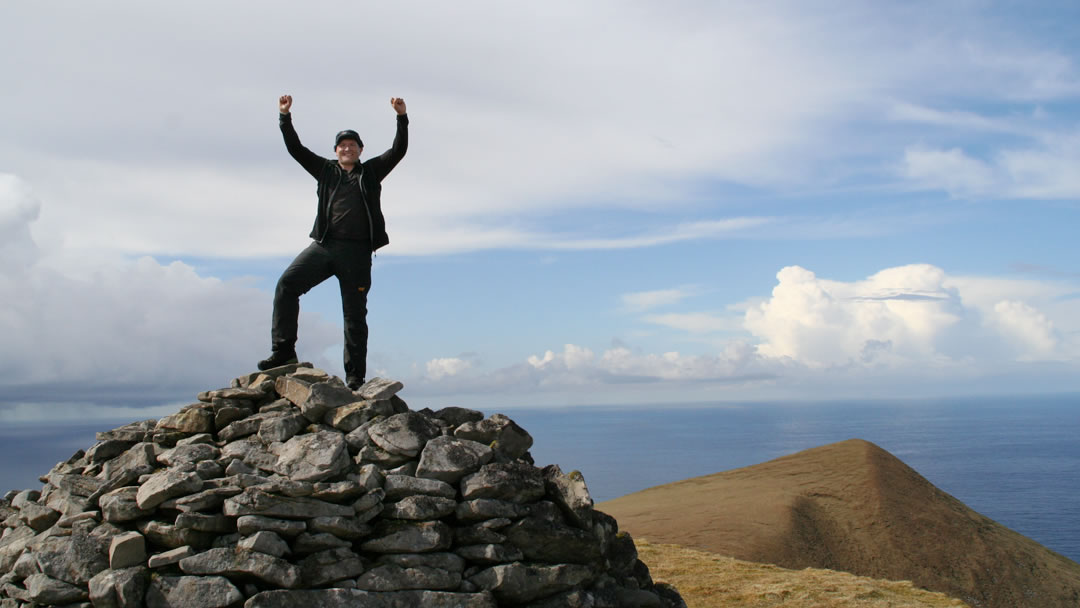
For more information see the Foula Heritage website.
 By Robin McKelvie
By Robin McKelvieRobin McKelvie is an award-winning travel writer and broadcaster who has been published in over 200 magazines and newspapers worldwide.
Pin it!